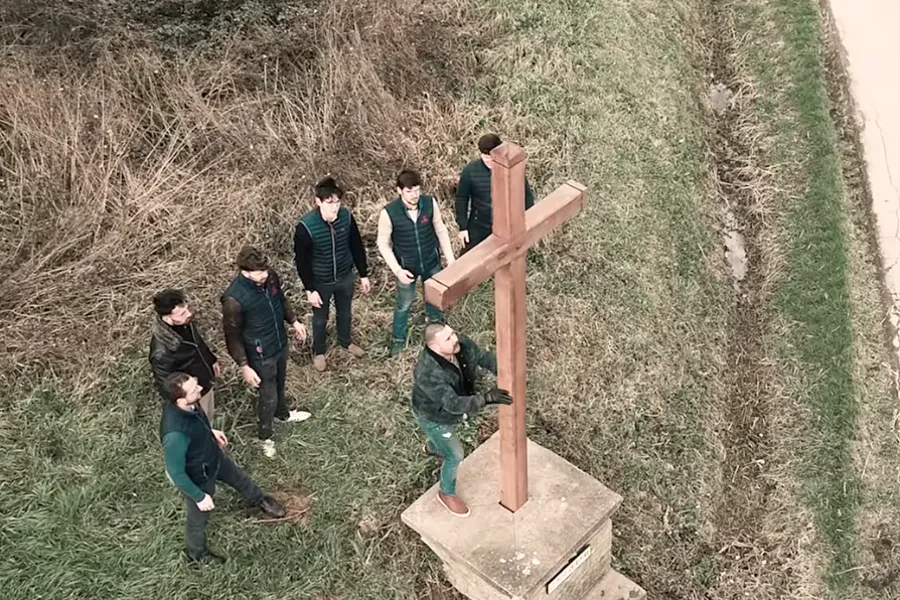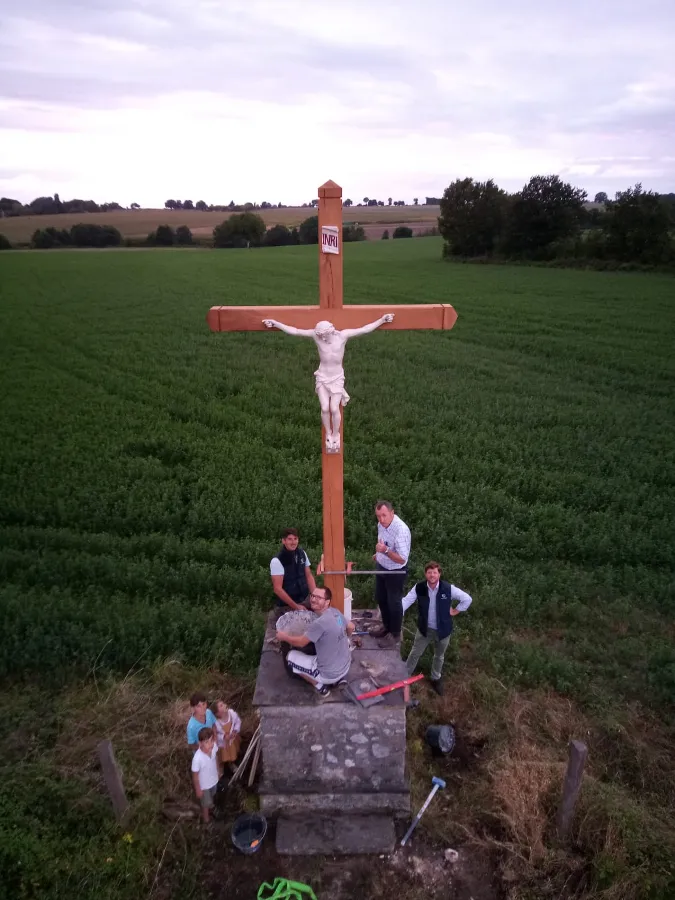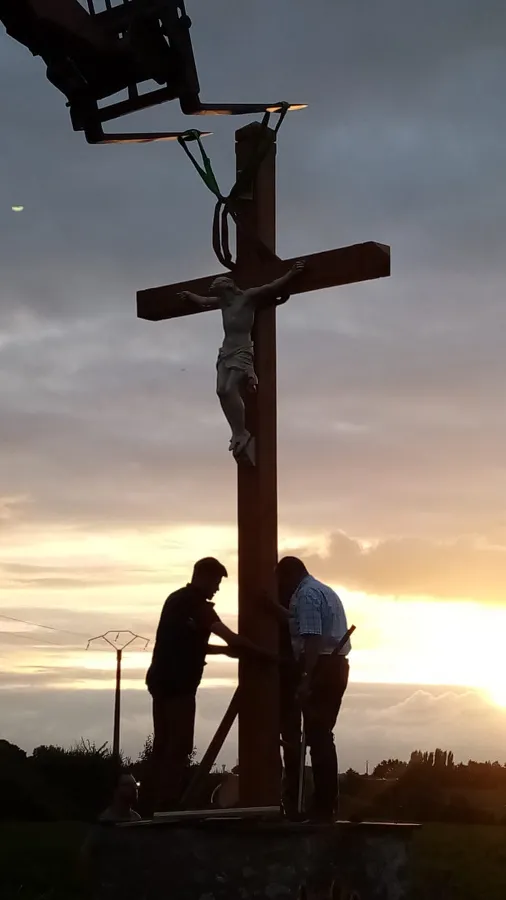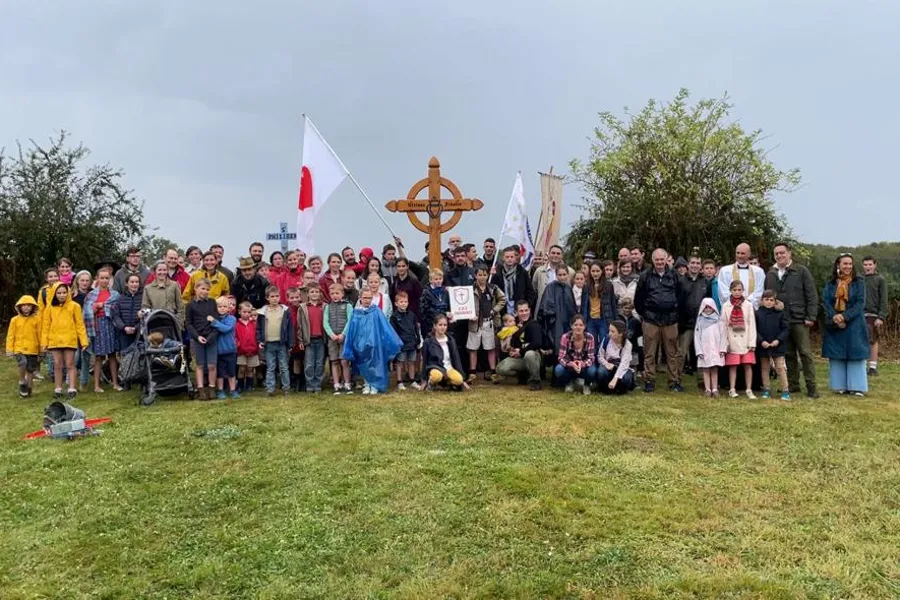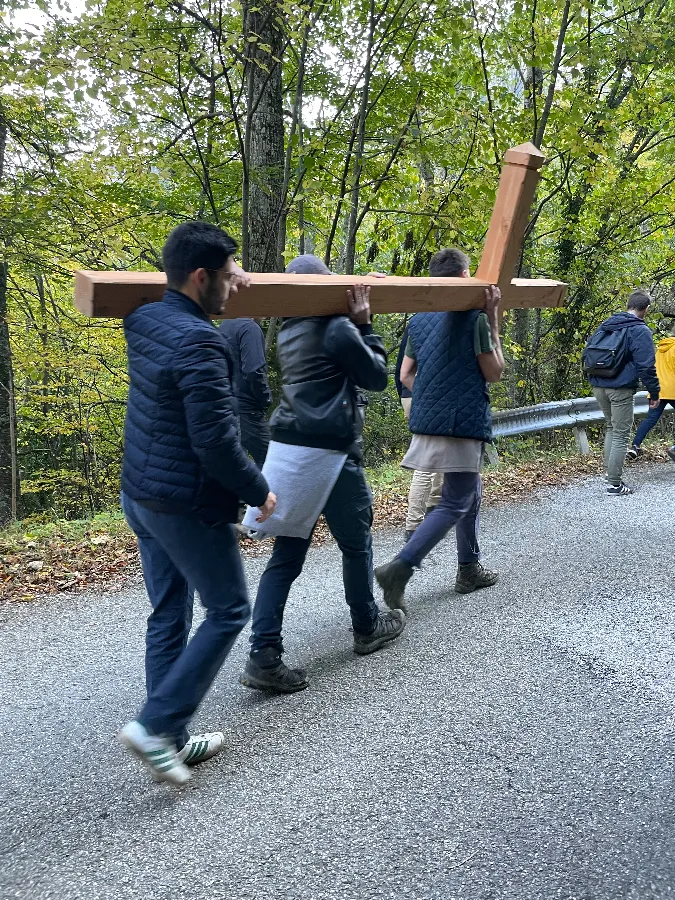The apostolate SOS Calvaires, founded in 1987 in western France, seeks to preserve the Catholic monuments, oratories and chapels that dot the French landscape.
The missionary spirit of young people in France is being rekindled by the surprising success of an association that is restoring wayside crucifixes across the country — and attracting considerable media attention in the process.
SOS Calvaires was founded in 1987 in the Maine-et-Loire department in western France. It sought to bring together people dedicated to preserving the “calvaries” (monuments or shrines), oratories and chapels that dot the French landscape.
The association gained momentum in 2015 when a group of young Catholics, who openly declared themselves “proud of their religion and heritage,” took up the mission under the leadership of Paul Ramé, who runs a carpentry business.
Julien Lepage, Ramé’s brother-in-law, joined the adventure in 2018 as a treasurer. He gradually rose to a leadership position, bringing with him great ambitions.
“I got to know about the association’s activities when my brother-in-law invited me to the laying of a calvary in our region, and it touched me very deeply,” Lepage told CNA.
“Indeed, to restore a calvary is very simple. But the impact is huge in terms of testimony, and I immediately saw the evangelizing dimension of it,” he said.
Lepage added that he soon challenged his team — whose members are all under 35 years of age — to restore one calvary a month in their region, instead of one or two per year.
Thanks to a growing social media presence, the association started to attract more and more young people willing to serve Christ in this way. They also drew the attention of Catholic and local media — until a well-known French YouTuber noticed them and things changed radically.
Baptiste Marchais was struck by the beauty and sincerity of the association’s mission. He is a powerlifter who holds the French record holder for the bench press. His YouTube channel, “Bench&Cigars,” has 230,000 subscribers.
In February, he joined members of SOS Calvaires in laying a 13-foot-high calvary. The video that he posted a month later quickly gained more than 200,000 views.
“This video has been an incredible game changer for us,” Lepage said. “We received thousands of donations overnight and people from across France asked us to restore calvaries in their respective regions.”
“We understood that there was something to be done, and we decided to embark on a national adventure, with new offices in different parts of the country,” he explained.
Lepage noted that the association had invested a lot of money to remain autonomous and be able to produce its own crosses.
Within six months, SOS Calvaires established 25 branch offices in France. To date, it has around 4,000 donors. It also has 800 members — up from 15 in February.
The organization is now restoring 10 calvaries a month across France.
The association occasionally provides calvaries to local pastors for their communities. It also sells some to private citizens who wish to plant a cross on their property.
“It is a way of letting people know that they are entering a Christian land, and we encourage these initiatives,” Lepage commented.
He said that the association’s growing visibility had great evangelizing power, especially among young people. He recounted that after Marchais posted his video, priests received calls from young people wanting to go back to church.
The initiative not only offers young people the chance to meet together. The ceremonies at the laying of calvaries are also always accompanied by prayer, songs, and convivial meals.
“Nowadays, countless young people feel lost, and they seek action,” Lepage said. “Restoring and setting calvaries in place falls within their competence and gives them a sense of belonging. They can identify with a cause, and it gives them a brighter image of the Catholic world.”
“Many of them see France declining, collapsing, and they want to preserve the Christian roots of their country, whether they are practicing Catholics or not.”
The present situation in France, marked by waves of vandalism and desecration of Catholic monuments, has not dampened the enthusiasm of the association’s young volunteers.
“Some time ago, one of our calvaries was tagged [with graffiti], and we responded by publicly warning vandals that for each calvary destroyed, we would build two calvaries, and it never happened again,” Lepage said.
Following its rapid expansion, the association hopes to restore 250 calvaries in 2022, and 1,000 per year by 2024.
This ambitious goal will be supported by an app designed to allow members to geolocate and list all the endangered or dilapidated calvaries that they come across. A partnership with the Association of the Guides and Scouts of Europe is also helping members to map and reference the country’s calvaries.
But the association’s grand designs do not stop there. It is also moving into education, offering instruction in schools. It sees this as a way to prepare new generations to keep alive the flame of faith and Catholic tradition in France.
Credit: Source link



